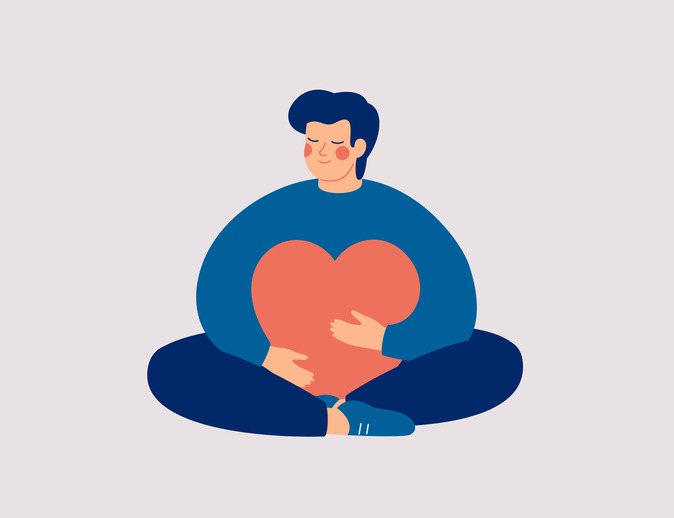
Practising mindfulness has many benefits, from calming nerves and anxiety to helping improve our focus and concentration – here are 15 everyday mindfulness exercises to know
CREDIT: This is an edited version of an article that originally appeared on Calmer
While there are countless ways to be more mindful, you might find a particular exercise more or less effective depending on your current situation and state of being. Most of the following exercises can be done in the space of a few minutes, from wherever you are. Consider trying a few of them out until you land on the best fit for what you are dealing with.
Press pause
As long as it is safe to do so, stop what you are doing. Make the choice to proactively take a break. Give yourself time and space to simply ‘be’ for a few moments. Try not to worry – while you are consciously on pause, your body and mind are still working hard to keep you alive and well.
When you are ready to move on – back to what you were doing, or to another Mindfulness exercise – take a breath in through your nose, breathe out through your mouth, and press play.
Notice your breathing
Direct your attention to your breath, and observe how you are breathing. Are you inhaling through the nose, or the mouth? What is the temperature of the air as you breathe in? When you exhale, are you naturally breathing out through the nose, or the mouth? What is the temperature of the air as you breathe out?
Next, notice the pace of your breath. Are you breathing quite quickly, or is your breathing rate relatively slow?
Finally, notice where your breath is moving to in your body. Perhaps you feel the breath mostly in your throat and upper chest, or maybe you feel your lungs and ribcage expanding? Or maybe your belly is expanding and softening with each breath?
If possible, try to resist the urge to change the way you are breathing. You are merely watching your breath, and making real-time observations about it.
Pay attention to your heartbeat
Your heartbeat is often a subtler internal metronome in the body compared to your breathing, however you can practise noticing your heartbeat all the same.
Quieten the mind and focus your awareness on the space of your heart. It may help to bring your hands to the front and back of your heart space in this exercise.
Take in your surroundings
Call your thinking mind back to the present by taking a moment to look around where you are. Move your neck slowly, in all directions, and name – silently or out loud – the colours you see around you.
Not only does this give the mind something to focus on, but the movement in the neck can release tension at the top of your spine and central nervous system that you were not even aware of.
Connect with nature indoors
In the absence of being able to get out into nature and reap the healing benefits of being outdoors, researchers from the University of Hyogo (Japan) found that the mere sight of a small indoor plant made a significant improvement on office workers’ psychological stress levels.
Check in with your senses
Bring all five senses back to the here and now with a simple exercise called 5-4-3-2-1. This can be used as an exercise in returning to the present, and can also be effective for those who are feeling anxious.
What are/is:
- Five things you can see?
- Four things you can touch or feel?
- Three things you can hear?
- Two things you can smell?
- One thing you can taste?
Practise belly breathing
Place one or both hands on the space below your belly button. Either sitting up or lying down, with the spine in its neutral position, inhale down to your hands and low belly, feeling a sense of expansion as you breathe in. At the peak of your inhale, allow your belly to soften and relax down along with your hands as you breathe out.
Ground through your feet
Whether you are seated, standing or lying down, try and find a way to connect the bare soles of your feet to the ground. Notice the stability and support of the ground beneath your feet. Imagine that you are breathing in this stability and support from the soles of your feet up, exhaling to return any flighty thoughts in the mind to the ground beneath.
Go for a mindful walk
Especially if you are desk based, the physical act of getting up to take a (short) walk can be very effective for inviting yourself back into the present moment. Notice the pace at which you begin walking, and allow the mind to follow the rhythmic shifts from right to left to right to left, and so on, with each step.
Scan your body
In stillness, take a few minutes to observe your body from head to toe, or from feet to head – whichever way feels more intuitive to you. Become aware of any parts of your body that are feeling stiff, tense or tired, as well as any parts of your body that feel at ease.
Allow this mindfulness to inform you of the choices you make for hours that follow. For example, if you notice during your body scan that your lower back feels tight, you may decide to incorporate some gentle stretching in this part of your body before you go to bed.
Stretch yourself in whatever ways you need
This is a good exercise to try soon after the body scan. When you’ve identified areas of tension in the body, allow yourself to move and hold static stretches in order to bring about some release.
If you are new to stretching and mindful movement, consult a movement or yoga practitioner for versions of a stretch that best suit your body’s needs and requirements.
Try a guided meditation
Follow the guidance of a trained facilitator if you would like to be in a supported space – you can listen to pre-recorded audio meditations or join a live Mindfulness or meditation class.
Set up mindful meetings
Ensure that your meetings are mindful and rooted in the present moment by:
- Asking all meeting participants to switch off their notifications, and that devices (other than the ones required for the meeting) are put away for the duration of the meeting.
- Start your meeting with a few calming breaths together, and/or a brief welfare check-in. If you are meeting online, the folks at Spill can add a free two minute meditation to the start of your call here.
- Invite those who are not speaking or presenting to be actively listening to the speaker/presenter.
Make space for mindfulness
Once your team is well versed in ways to be mindful, offer them a space and time(s) to put this into practise during the working day. This can be a dedicated virtual space in a video conference, or a physical room that is booked for the purpose of mindfulness where staff can practice together at fixed times.
Buddy up for accountability
To embed your new habit of Mindfulness into your life in and out of work, find yourself an accountability buddy. This could be a daily or weekly check-in with a colleague who is also interested in trying to weave more mindful moments into their day or added onto a regular check-in with your manager or team leader.


Be the first to comment